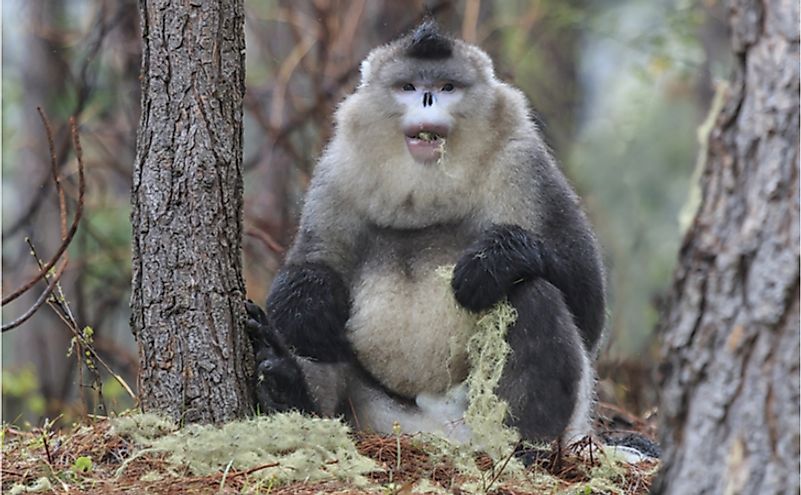Where Does The Tonkin Snub-Nosed Monkey Live?

The Tonkin snub-nosed monkey, also known as Dolman’s snub-nosed monkey, is one of the world’s rarest primates. It is scientifically referred to as Rhinopithecus avunculus. The Tonkin Snub-nosed monkey is only found in one country in South East Asia: Vietnam.
Description And Behavior Of The Tonkin Snub-nosed Monkey
Most of the skin of this Old World monkey is white and yellow. It has pale blue rings around the eyes, a bluish-black muzzle, and pink lips that are encircled by bluish-black skin. It weighs 8 to 14 kg. It utilizes all four limbs for mobility which includes walking, climbing, and leaping on trees.
Tonkin snub-nosed monkeys are social animals who live in groups made up of one male, several females, and their young ones. However, sometimes the males form an all male's group. Besides, these groups keep shifting as they split into smaller groups or join other groups to form bigger ones. Thus, the Tonkin snub-nosed monkeys feed, travel, socialize, and sleep in these groups. Furthermore, they are also diurnal creatures which means that they are active in the day and sleep at night. The snub-nosed monkeys are herbivores who feed on leaves, seeds, flowers, and fruits. They live for about 20 to 29 years and have a gestation period of approximately 7 months.
Global Distribution Of The Tonkin Snub-nosed Monkey
Tonkin snub-nosed monkeys are native to the northern regions of Vietnam. In the past, the majority of these monkeys lived on the eastern side of the Red River in Vietnam. However, presently they occupy the provinces of Ha Giang, Tuyen Quang, Thai Nguyen, and Bac Kan. Tonkin snub-nosed monkeys prefer to inhabit primary forests including sub-tropical evergreen forests and bamboo forests. They also live on hilltops and mountains in areas which have temperate climate zones. Such zones are characterized by monsoon rainfall and tropical temperatures.
Conservation Efforts
According to Fauna & Flora International (FFI), the current estimated number of Tonkin snub-nosed monkeys are 150 to 250. Such low numbers are because they are threatened by large scale deforestation and heavy hunting in Vietnam. As a result, the IUCN Red List has classified this beautiful primate as Critically Endangered. The Critical Ecosystem Partnership Fund (CEPF) is currently leading conservation efforts to ensure the few remaining monkeys survive. This organization has been carrying out campaigns whereby the local communities that live around the forests learn how to reservedly use the natural resources to conserve habitat for the Tonkin snub-nosed monkey. Under the conservation initiative in partnership with the local communities, ongoing activities include the demarcation of protected areas of the forests and buffer zones.











